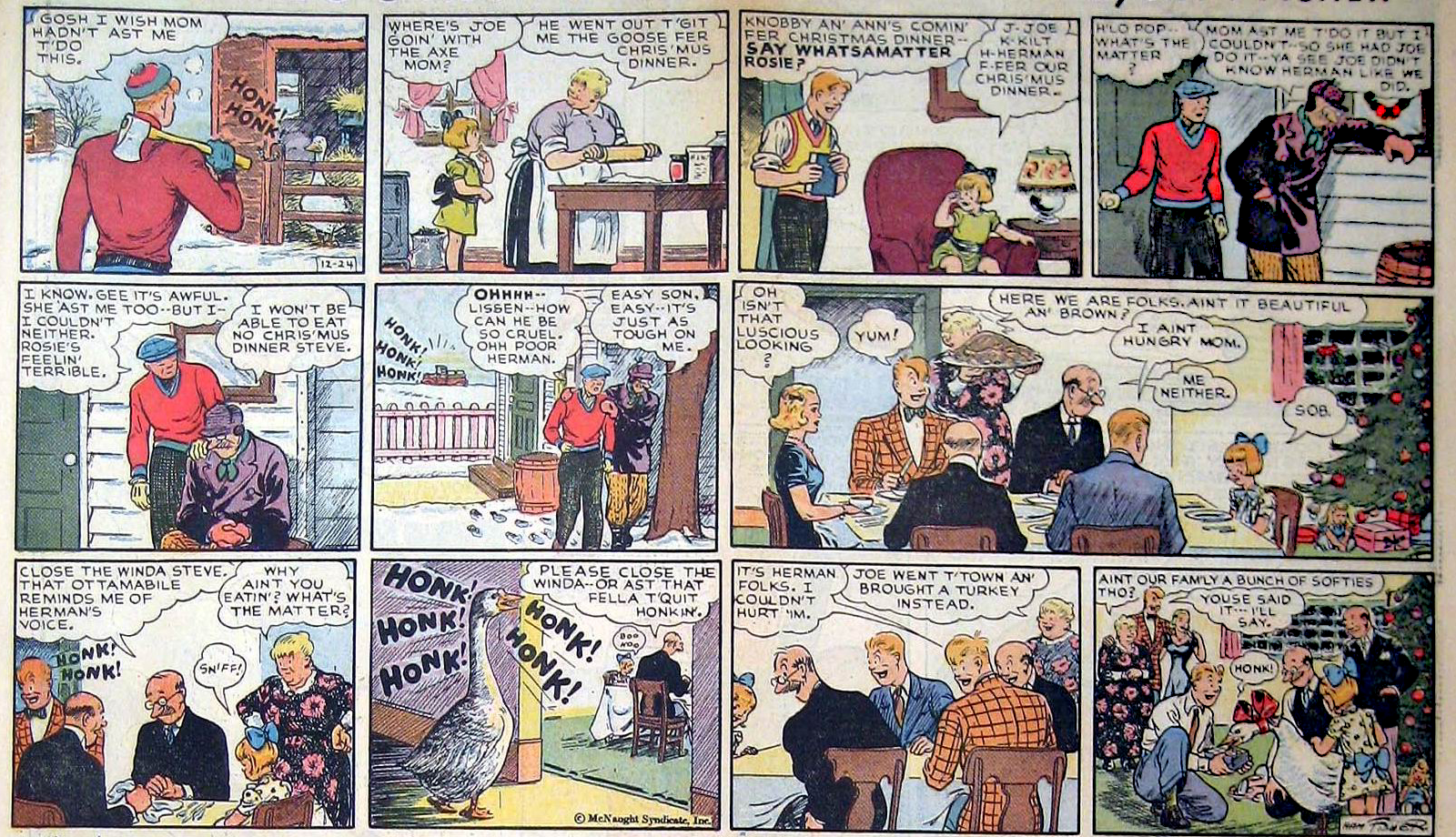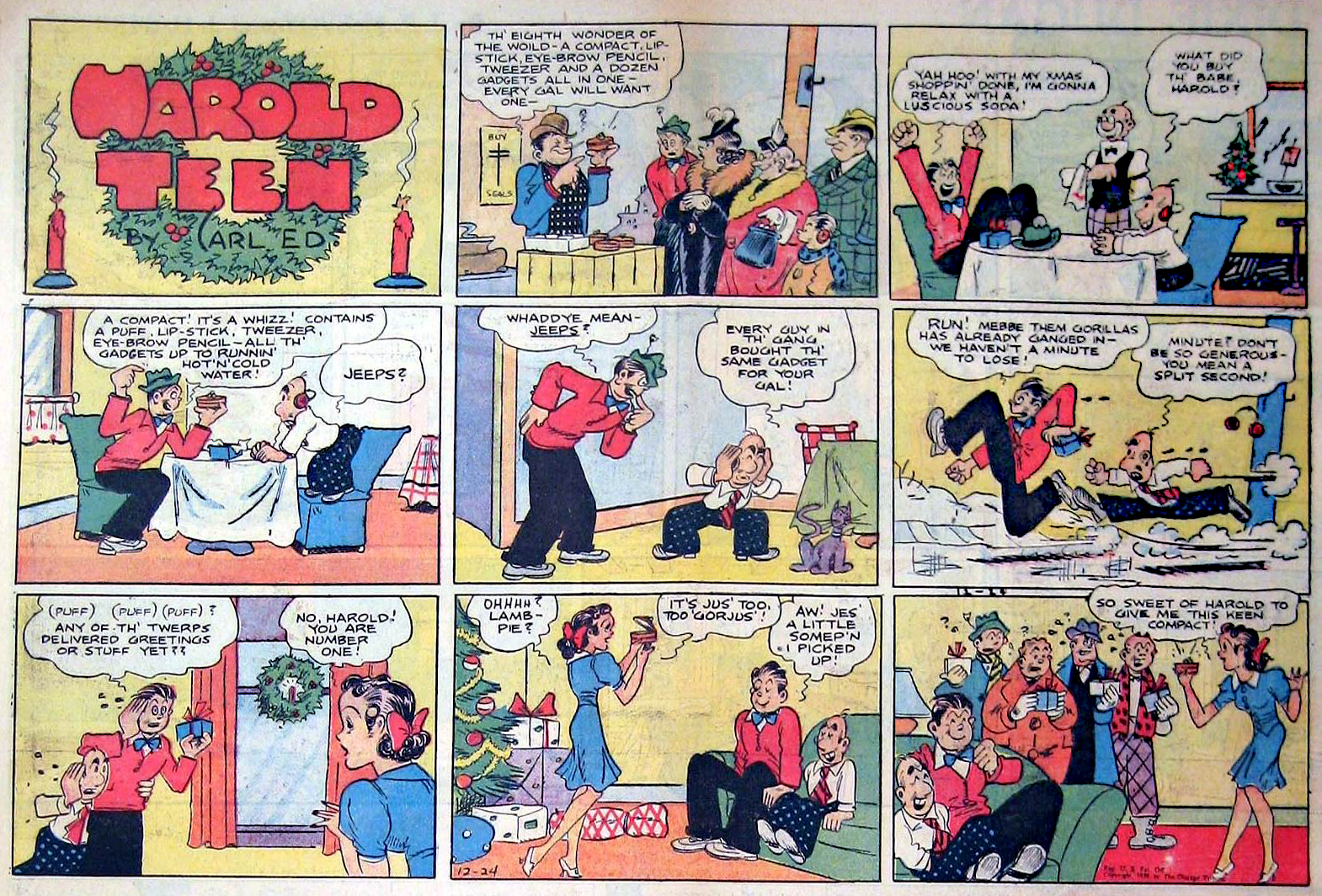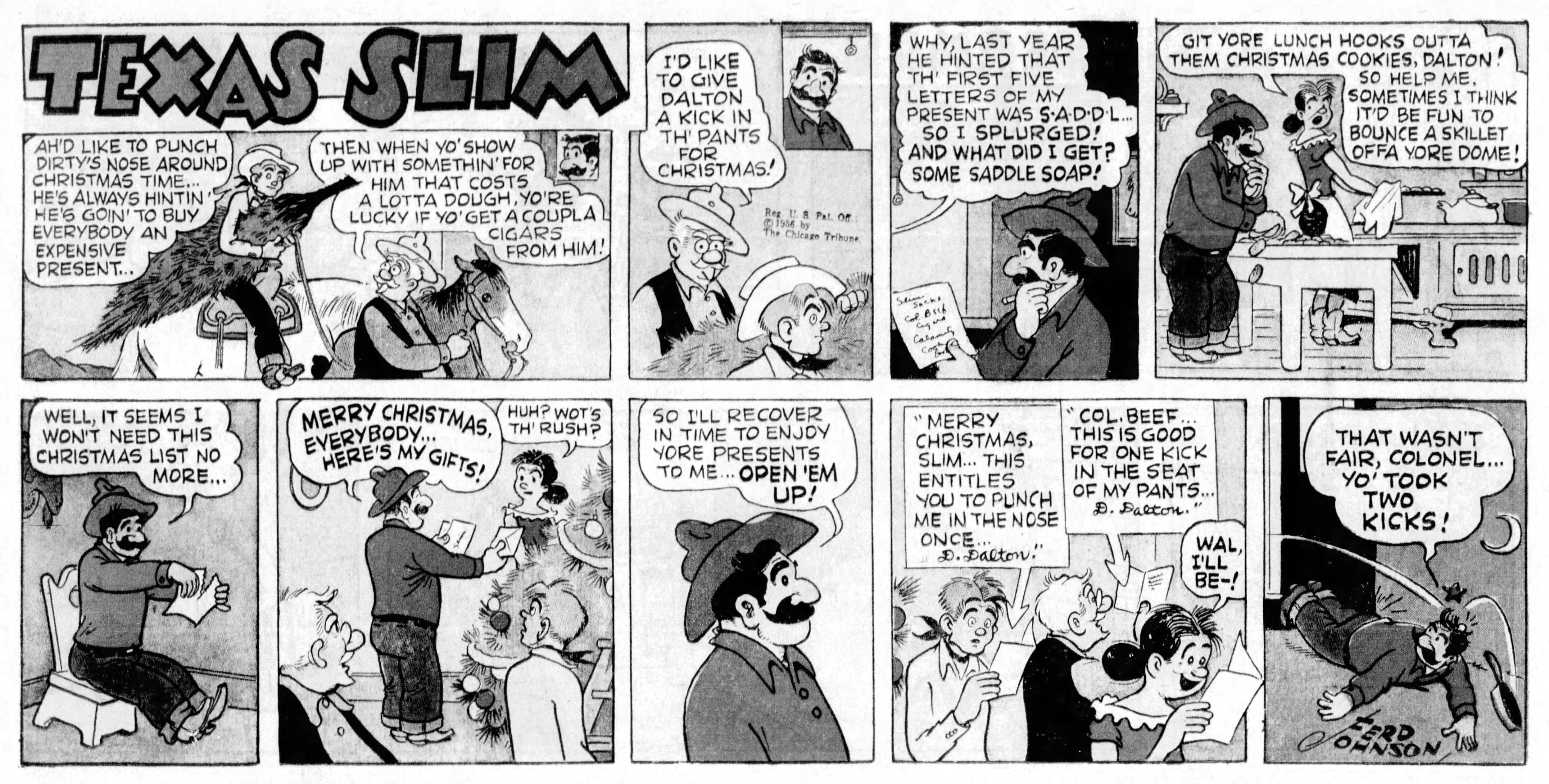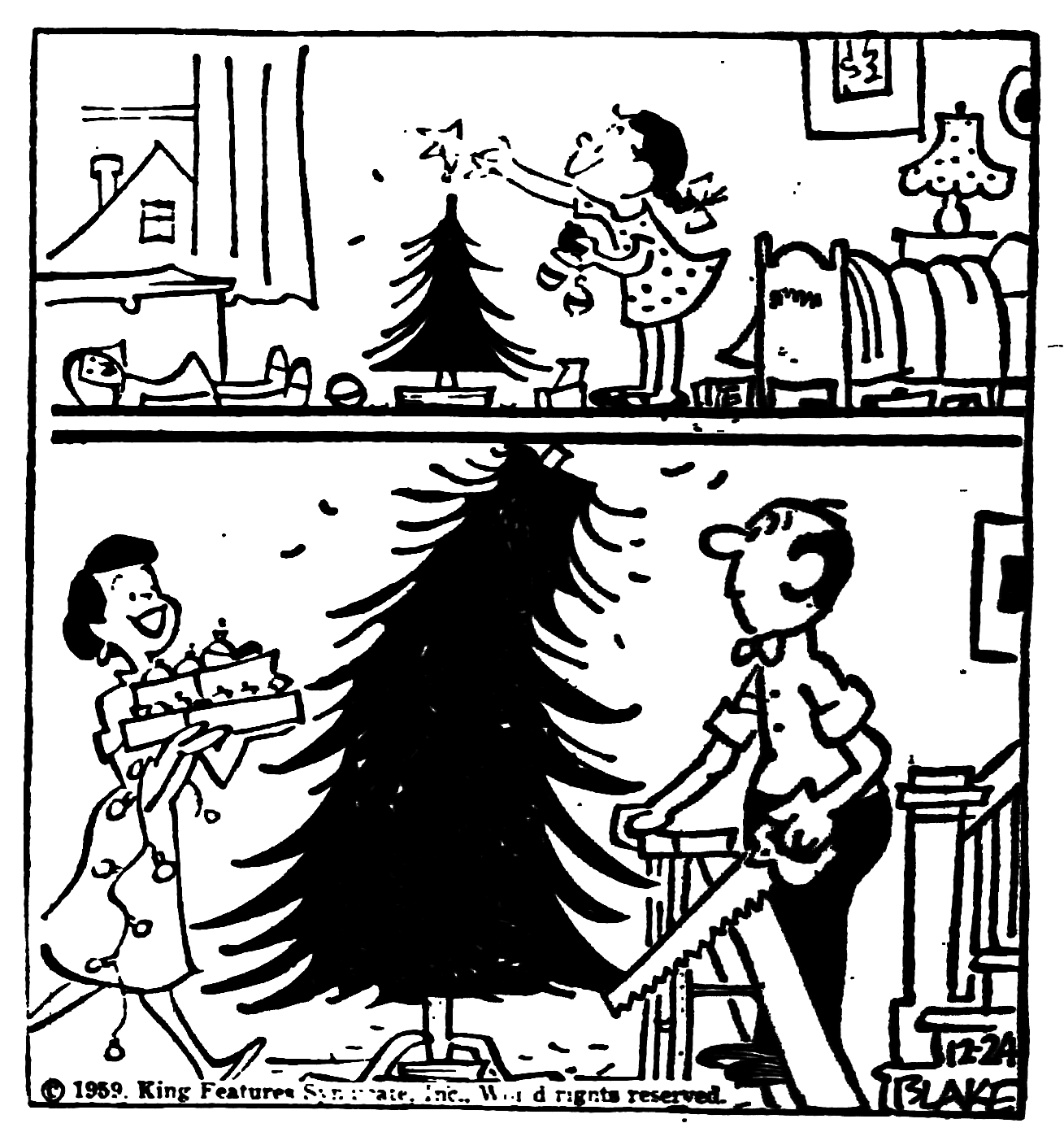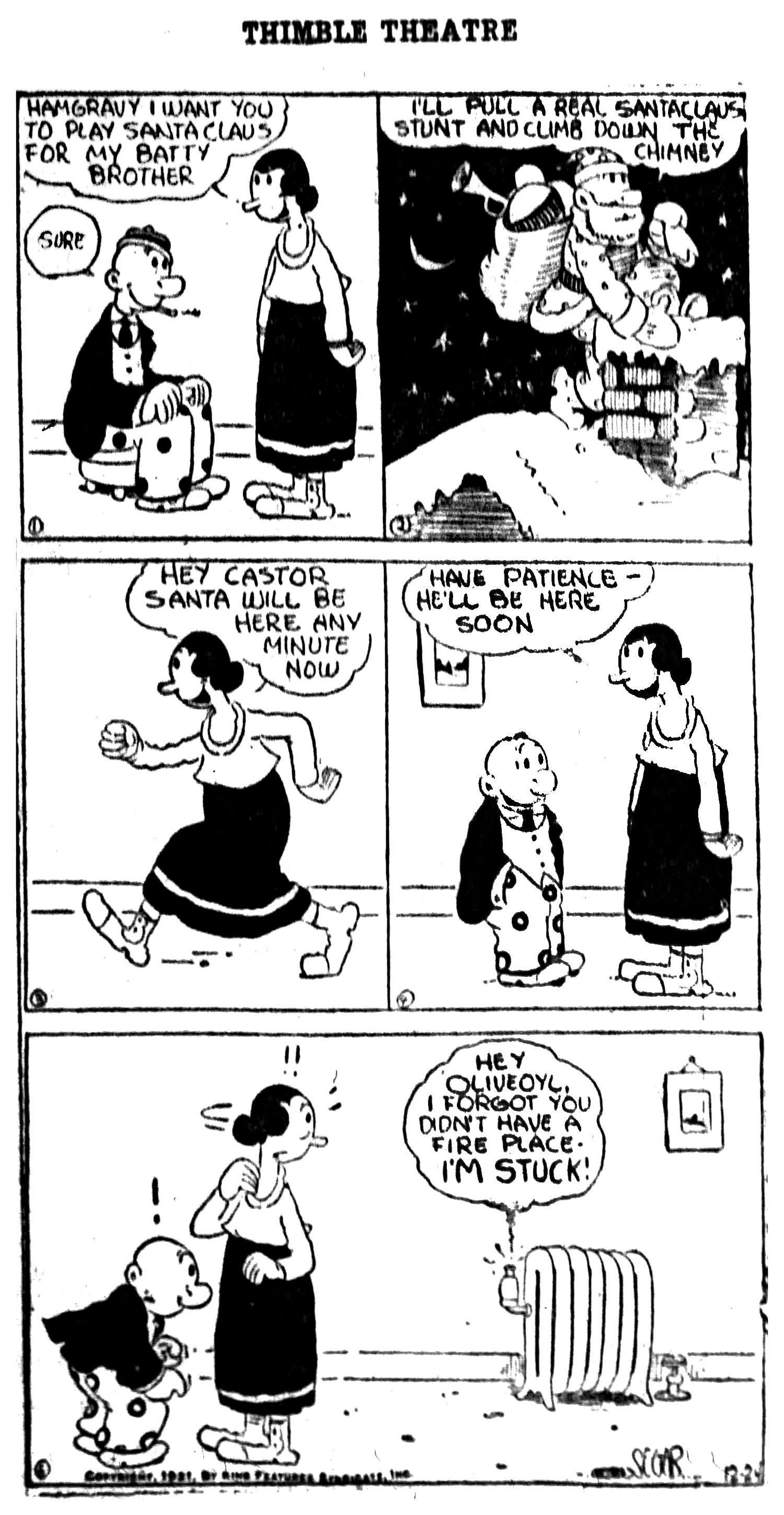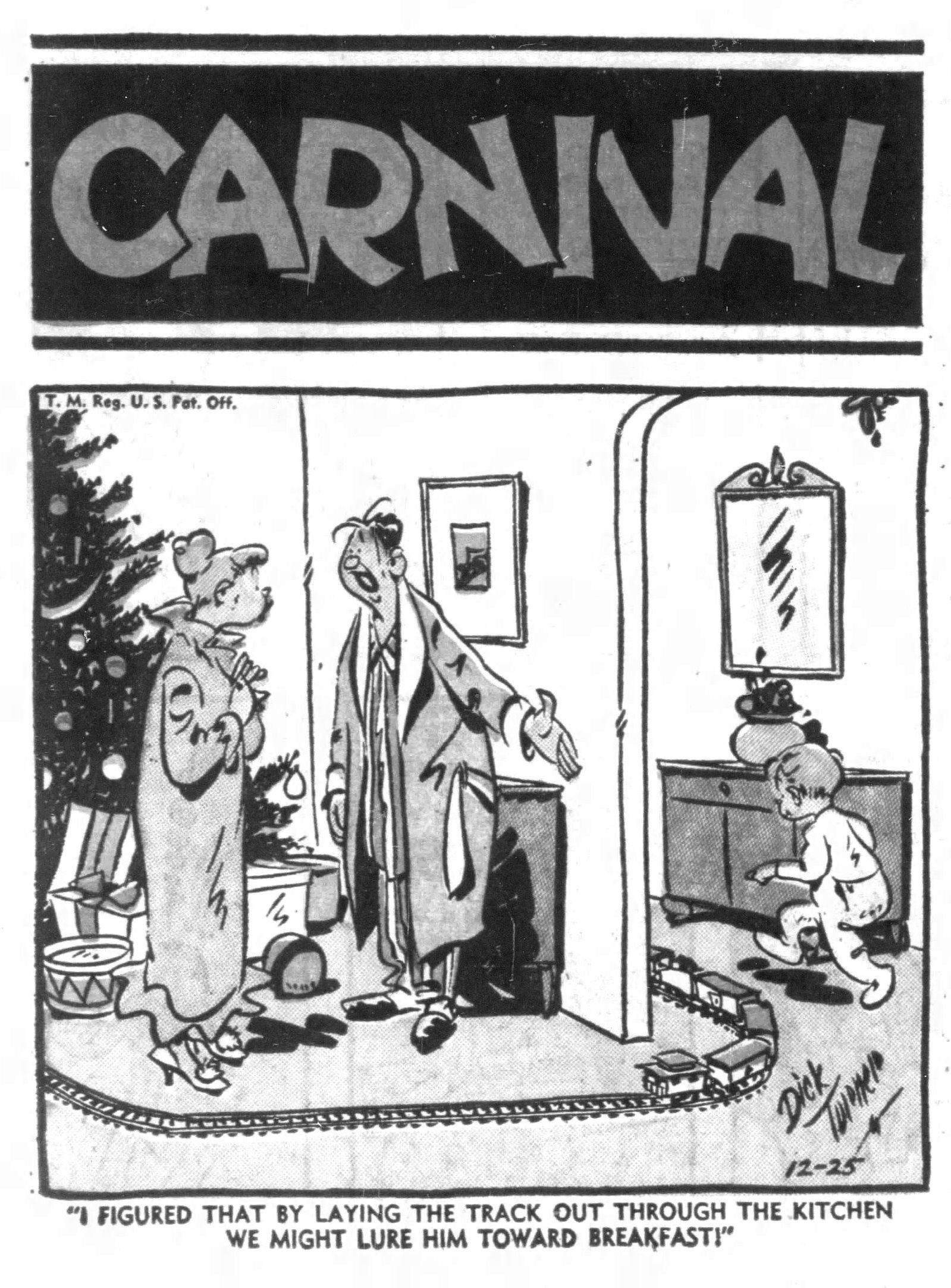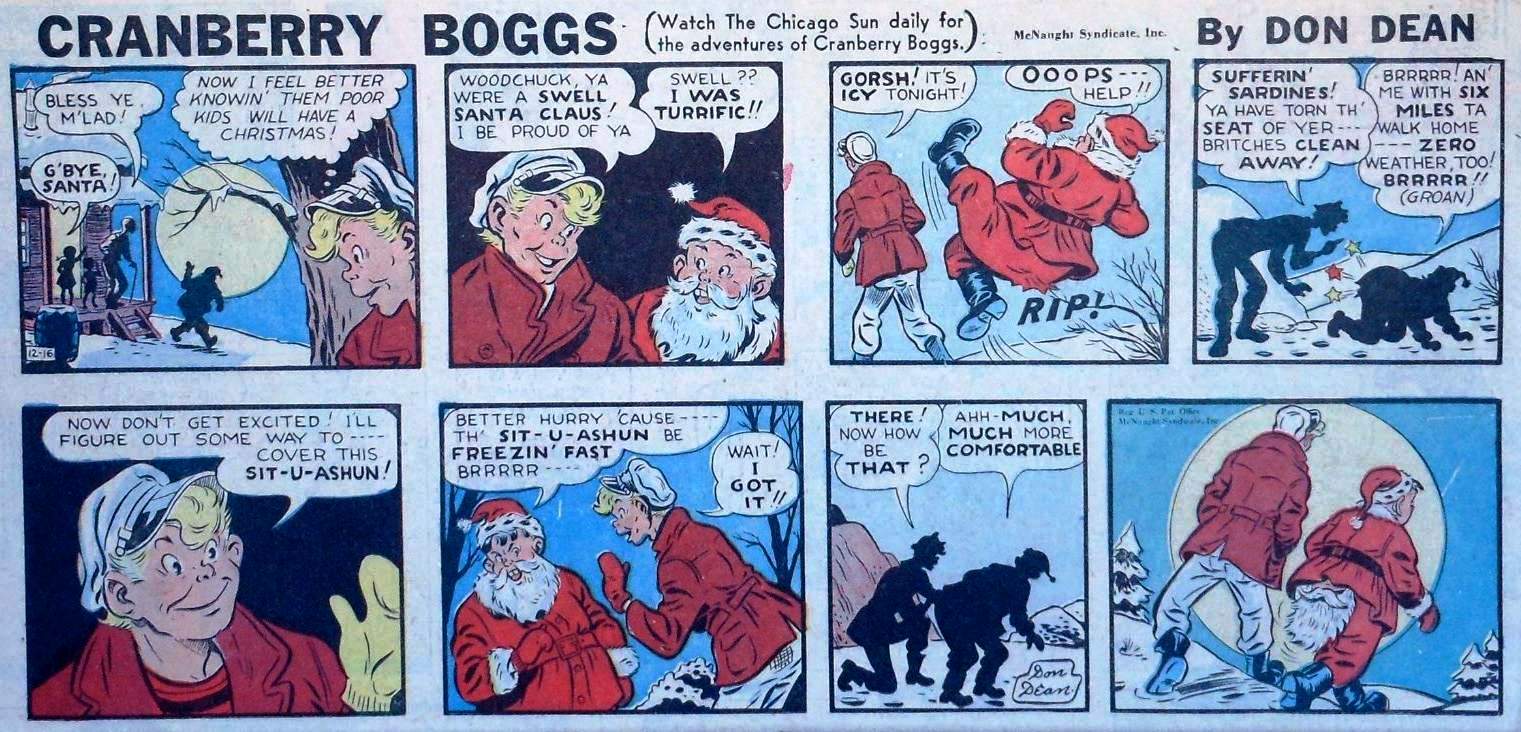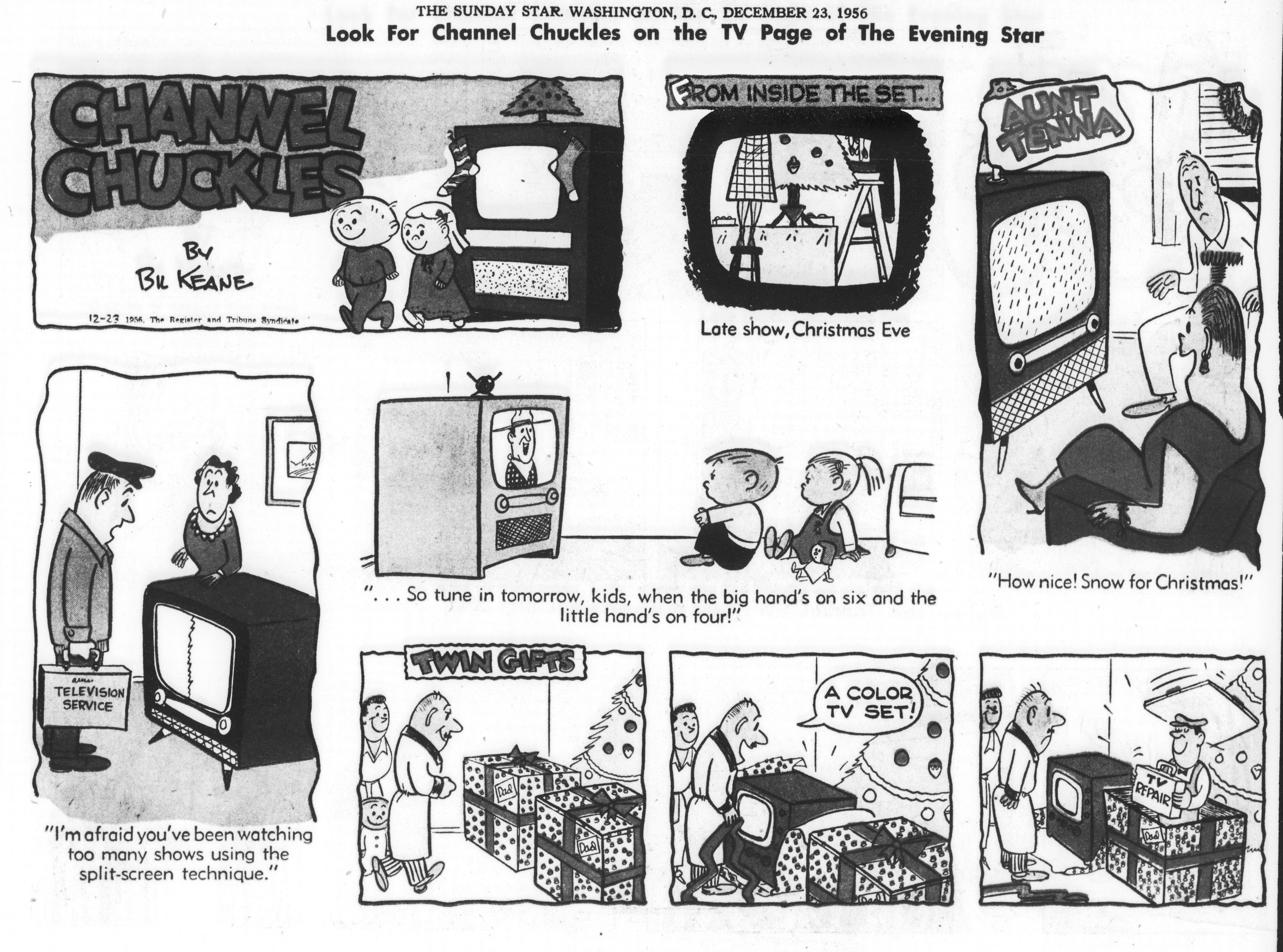Click the image to see a larger version.
Joe Palooka, created by Ham Fisher, was a strip about a boxer, though not necessarily always about boxing. The titular Joe was large and strong, but had a big heart and overall was a softie. As we see in today's strip, it seems the same can be said for the rest of his family. None of them could bear to eat Herman, no matter how delicious he would have been. Spare a thought for the turkey that became their actual Christmas dinner, though.
